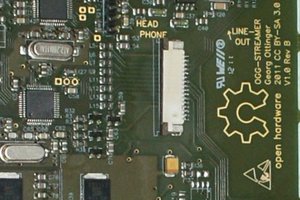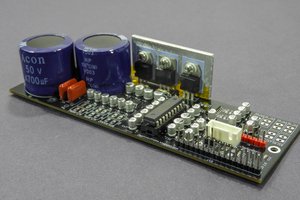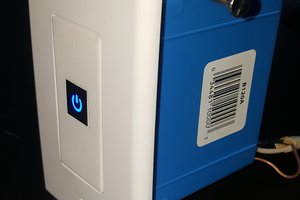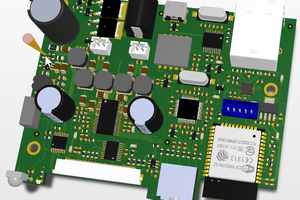This project is a DIY six-channel stereo speaker selector based on STC15W201 MCU. The purpose of this electronic switch is to share a pair of speakers between six stereo audio systems. This is an improved and low-cost version of the 6-channel speaker selector which we developed a few years ago.
This new speaker selector uses STC15W201 MCU. This MCU is a low-cost 8051 MCU designed by STC micro. At the time of this writing, the STC15W201 can obtain for less than US$ 0.8. To drive the seven segments and to control the relays, this design uses the popular 74HC595 8-bit shift register ICs.
To select each speaker channel, we use pair of 12V DPDT relays. These relays interface to 74HC595 through a ULN2001D 3-channel Darlington transistor array IC. This 3-channel Darlington driver IC is functionally equivalent to the famous 8-channel ULN2003 IC. This ULN2001D version is an 8-pin IC and is available in both DIP-8 and SOP-8 packages.
This new board is designed to work with a 12V DC power supply and in our prototype build, we use a 12V/5A SMPS unit to power the whole system.
To get the optimal results with this circuit, use an Omron G2R-2-12DC or an equivalent type of relay with a coil current lower than 100mA.
The firmware of the STC15W201S is developed using SDCC. To flash the MCU, we use stcgal. Thanks to the built-in bootloader, we can program this MCU using a generally available 5V USB to UART module/dongle.
The complete build process of the speaker selector is shown in the video below:
The functionality of the firmware is almost identical to the old PIC16F88 firmware. After powering up the system, the active speaker channel is displayed on the seven-segment display. To switch to a different speaker channel, press the button repeatedly with short intervals.
To mute or disconnect the current speaker channel, press and hold the same button for more than 3 seconds.
As described above, all functions of this circuit can be the control using a single push switch.
To reduce the cost and minimize the front panel complexity, we suggest using the dot indicator of the seven-segment display as a mute indicator. The front panel wiring layouts are available here.
The PCBWay sponsored this project. PCBWay offers high-quality PCB manufacturing and assembling services. Also, they offer CNC and 3D printing services. The Speaker selector PCB is available to order from PCBWay. Check out the PCBWay website for its manufacturing capabilities and pricing.
This project is an open-source hardware project. All its design files, schematics, and firmware source codes are available at Github.com.
The PCB design, schematic, and other design files of this project are covered with a CERN-OHL-W 2.0 license. Firmware source code is released under the terms of the MIT license.
 Dilshan Jayakody
Dilshan Jayakody
 georg ottinger
georg ottinger

 Joe Menard
Joe Menard